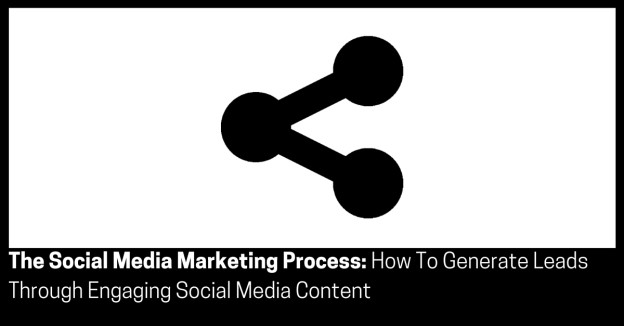Approximate read time: 21 minutes
…Did you know 114,000,000 are people doing things on the internet right now as you read this?
When a brand complaints that there is no traffic, I laugh, because there is always traffic on the internet, approximately 114,000,000 at any given time.
There is so much traffic that even if you get 0.00001% of that amount, it would bring down your web hosting server down in a fraction of a second.
Rather, the issue brands have is that they don’t know how to tap into the internet’s “firehose” of traffic.
A firehose has a much larger diameter than a regular hose so it has the ability to carry more volume.
So, an internet firehose is a website that carries more volume of digital traffic than a regular website.
Much, much more!
And in the context of marketing, larger access to prospects is always better than less.
One answer to tapping into this free firehose and accessing traffic is social media and content marketing, AKA Social Media Marketing.
That’s what this guide will discuss.
Often, I see two similar brands servicing similar demographics on social media, particularly Facebook, Twitter or Instagram, post similar content, at similar frequencies, yet one has been around for less time and has vastly more Fans or Followers.
Although it’s impossible to see as an outsider how many of these Fans or Followers convert to leads and sales, it’s safe to assume if they get this first part correct, the rest takes care of itself.
And there are reasons why there is such a discrepancy between the two brands, often by tens of thousands of Fans or Followers within such a short period of time.
Simply, some understand social media marketing and others do not – by the way, in my opinion, there is a lot of useless nonsense out there.
Social Proof is powerful, Robert Caidini wrote about it in his book, Influence, “People will do things that they see other people doing,” which in this case is followed and engage on social media if others are doing the same.
The thought process is, “this brand has a lot of Fans or Followers, therefore, they must be an authority, credible, legitimate, deliver results, and trustworthy.”
It is the digital equivalent to being in a new city and going to a restaurant with a line and not the empty one next door: a crowd brings a crowd.
It creates gravity to the brand and a self-perpetuating fly-wheel of customers.
By the way, popularity is reflected in follower count, views, likes, shares, and comments, and these drive brand perception and revenue.
Social media could be defined as the collection of websites and applications where users create, distribute and engage with content or participate in networking.
Content could be defined as creating and distributing consumable information that is expressed through a medium, such as text, images, video, audio and so on.
Taking this concept further, content in the context of marketing and sales is creating and distributing content that is useful to your prospects and customers and to generating leads and convert them to sales.
And of course, the vast majority of the Internet is made up of content, such as text, images, video, audio and so on.
Social media also has various functions for brands.
It can also be used for the following;
- Customer service;
- Market research; and
- Feedback.
- To name just a few…
But these are not the focus of this guide.
This focus is on Social Media Marketing.
Social Media Marketing could be defined as user created, distributed and engaged content for the purpose of:
- Prospects finding and following your brand’s communication on a particular social media platform;
- Prospects finding and opting-in to your brand’s direct communication;
- Prospects skipping both 1 and 2 and purchasing from your brand immediately;
- Prospects and customers receiving valuable content, so they convince themselves your brand the best for solving their needs; or
- A combination of all of the above.
Number 1 can put your control of access and reach to that cohort in jeopardy.
Facebook has been known to limit the access and reach to audiences for brands in the past, making them pay for that privilege, even though the brand has established that cohort on that platform already.
The rest of the outcomes are generally achieved through the inbuilt technology of social media platforms that you can leverage for more reach and awareness, and thus more leads – the ability for brands to publish content and fans to engage with it.
Social Media Marketing generally encompasses the following requests:
- Asking fans to follow your brand to create social proof for other potential fans to potentially follow your brand;
- Asking fans to share content with their followers to increase the likelihood of exposure, reach and attention (and thus interest) to segment and qualify new potential prospects who may potentially follow your brand; and
- Asking fans to share content with volume and speed so the content becomes a trend and reaches the front page or leader board of a platform so your brand can reach even more potential prospects who may potentially follow your brand.
When most people discuss social media marketing, they are referring to #1 and #2.
A more uncommon, yet immensely powerful use of social media is incorporating #3.
This is a really powerful distribution firehose.
They have a lot of organic traffic, and if you can get on the “front page” for free, you get a lot of extra awareness.
Engagement could be defined as participating or becoming involved in an activity.
Social media engagement could be defined as participating or becoming involved in a social media activity, such as:
- To click on content sales scripts;
- To view or download content;
- To like content;
- To vote (a form of liking) on content;
- To comment on content;
- To review content;
- To react or respond to content;
- To share content;
- And so on…
This functionality uses inbuilt technology of the social media platform and gives rise to specific social media marketing strategies and tactics that this guide will address.
Sharing is the easiest way to get reach and gain awareness.
There are two types of sharing:
- Linear sharing; or
- Viral sharing.
So let’s discuss The Social Media Marketing Process in broad brush strokes…
This process could be summarised and written as a formula:
Social media platform + social media content + engagement by followers = earned reach and brand awareness to potential followers to segment and qualify them in hopes they start following your brands’ communication.
Or if it used the analogy of a gun firing a bullet at a target:
- The guns hammer = your brand ;
- The bullet casing = the social media platform;
- The gun powder = your followers;
- The bullet head = your content; and
- The target = potential prospects and followers.
Here are the steps of the Social Media Marketing Process:
- STEP 1: Purchaser Insights;
- STEP 2: Pipeline Alignment;
- STEP 3: Social Media Presence;
- STEP 4: Content Purpose;
- STEP 5: Content Topics, Types and Modalities;
- STEP 6: Content Sales Script; and
- STEP 7: Content Distribution.
Let’s begin with…

1) Purchaser Insights
…This step is about understanding your prospects and customers.
You need to know your prospects and customers’ dreams, fears, problems, needs, mistakes and so on – the things that your products, services or solutions address.
You need to understand these and several other insights on a very deep level.
External insights are about “pains” and “gains.”
Internal insights are about your products, services and solutions.
Most people do not know their prospects and customers’ hot buttons and what makes them really tick.
At this step, we come across the first decision tree.
If you do not know your prospects and customers’ dreams, fears, problems, needs, mistakes and so on, then you need to do some heavy market research to discover what these are.
If you do know your prospects and customers’ dreams, fears, problems, needs, mistakes and so on, then list them all.
You need to find a match between social media platforms and your prospects and customers naturally use.
Document these in your Social Media Content Planner.
Of course, the exact details of how to do this are beyond the scope of this guide.
In summary, this step is about knowing your prospects and customers’, which leads us to the Pipeline Alignment step…

2) Pipeline Alignment
…This step is about aligning your social media content with your marketing and sales pipeline.
A basic marketing and sales pipeline may look like this:
- Pre-opt-in content;
- Gated offer;
- Low priced offer;
- Main offer; and
- Profit offer.
Social media addresses Step 1 & 2:
- Creates awareness of your brand;
- Segments and qualifies potential prospects and followers through providing valuable content; and
- Makes an offer.
Social media helps align your content to your marketing and sales pipeline, particularly to your pre-opt-in content categories, your pre opt-in content types, topics and modalities, your contact database list names, your introduction content topics, your ongoing broadcast content topics, your gated offers as well as bonus content, product, service or solution launch content and all other content.
Then, this all seamlessly links up directly to your products, services and solutions.
In effect, content becomes a way to segment your prospects to the most relevant products, services and solutions.
Of course, the exact details of how to do this are beyond the scope of this guide.
Document this step in your Social Media Content Planner.
In summary, this step is about aligning your content with your marketing and sales pipeline in a linear way, which leads us to the Social Media Presence step…

3) Social Media Presence
…This step is about social media presence creation.
Here we come across the second decision tree.
If you do not have any social media accounts, you need to create them.
Creating social media accounts is straight forward, but beyond the scope of this guide.
If you do have social media accounts, you need to determine how much traffic is coming from social media to your website (as it’s not common to sell products, services or solutions directly from your social media accounts).
This will give you a baseline to measure your future social media activity to see if it is effective in generating leads and sales – remember this guide is about a very specific use of social media, social media marketing.
Document this step in your Social Media Content Planner.
Of course, the exact details of how to do this are beyond the scope of this guide.
In summary, this step is about social media presence and reputation creation, which leads us to planning and creating content starting with the Content Purpose step…

4) Content Purpose
…This step is about determining the purpose of each individual content.
Once you have completed your market research and picked the platform and content types, you then need to plan then content you will use.
It is important to note that your business is not a charity, and content is not just about giving value away for free with no catch.
The catch is that you want them to take action after they have consumed it.
Action that moves them in your marketing and sales pipeline.
Content should always have goals.
There are seven possible choices for your content:
- Drive external traffic – to introduce prospects to your brand;
- Segment prospects via opting-in – to generate leads;
- Encourage prospects to consume more available content – to fuel more brand touch points;
- Get prospects to purchase low priced product, service and solution – to trigger and activate purchasers;
- Urge customers to consume more available content – to provide customer satisfaction;
- Introduce your main product, service and solution – to create awareness of them; and
- Try something out – to see if they can do it themselves.
Social Media Content should always engage.
In other words, Social Media Content polarizes people – they are either in or out.
Document this step in your Social Media Content Planner.
Of course, the exact details of how to do this are beyond the scope of this guide.
In summary, this step is about determining the purpose of the content you will create, which leads us to the Content Topics, Types & Modalities step.

5) Content Topics, Types & Modalities
…This step is about the individual content type.
Once you have determined the purpose of an individual piece of content, you then need to choose the topics, types and modalities of content that best communicates the purpose and topic of the individual content.
Topics will provide free informational and educational information that address prospects and customers’ dreams, fears, problems, needs, mistakes and so on.
You will know what these topics are based on your own data and research.
So, what follows is the topics of content that trigger certain emotions that make people compelled to engage with that content.
The nature of the content topics you need to create are:
- Interest;
- Newness;
- Uniqueness and difference;
- Humour; and
- Speculation.
- To name a select few…
Or the more negative topics:
- Controversy;
- Conflict;
- Rumour;
- Scandal; and
- Sensationalism.
- To name a select few…
This content generally evokes strong emotions in people because they challenges or offends people’s behaviour, beliefs or belongings according to author Tim Ferriss.
These emotions may include:
- Shock;
- Affinity;
- Intrigue;
- Enjoyment;
- Titillation;
- Arousal;
- Confusion;
- Excitement;
- Interest; and
- Remarkable.
- To name a select few…
Or the more negative emotions:
- Hate;
- Disgust;
- Outrage; and
- Anger.
- To name a select few…
It’s unfortunate that these topics of content and related emotions appeal to humans, but they are what people generally want to consume, as they are primal, deeply embed emotions in the human psyche.
They are “valuable” content.
All of this means your brands stands out in its content.
I suggest you steer clear of the negative topics and emotions and focus on the positive.
These emotions usually evoke and pique interest and bait an urge or compels to engage, spread and pass the content along through social networks through the various mechanisms as discussed previously:
- To click on content sales scripts;
- To view or download content;
- To like content;
- To vote (a form of liking) on content;
- To comment on content;
- To review content;
- To react or respond to content;
- To share content;
- And so on…
These actions could be achieved by the following types of content that are easy to consume:
- Lists
- Best-of’s;
- Demonstrations;
- How-to’s;
- Quizzes;
- Quotes;
- Memes;
- Slideshows;
- Images;
- Infographics;
- Animated Gifs;
- Exclusives;
- And so on…
And the more negative types:
- Leaks;
- Risqué advertisements;
- Misleading headlines;
- Making things up;
- And so on…
This content could be communicated through a range of content modalities:
- Text;
- Image;
- Video;
- Audio;
- And so on…
Of course, the content needs to be related to your brand but not necessarily your products, services or solutions specifically.
Content has a short shelf life and expires quickly, meaning you need new material constantly.
Or you could simply curate someone else’s content to distribute.
It is best to curate content first.
Then, when you know what works best in terms of engagement on social media and you know how to create content quickly, start creating content yourself.
Document this step in your Social Media Content Planner.
Of course, the exact details of how to do this are beyond the scope of this guide.
In summary, this step is about the type of content that will best communicate the purpose and topic, which leads us to the Content Sales Script step…

6) Content Sales Script
…This step is about writing the “sales” script for the individual piece of content to engage people.
Content does not exist in isolation.
What I mean by that is prospects and customers come across content somehow.
In other words, they took an action to find the content – it didn’t just randomly appear in front of them.
The action they took to find the content is what this step is about – writing the sales script to the content you just created in order to “sell” prospects and customers on consuming the content.
Once you have chosen the topic, type and modality of content that best communicates the purpose of the individual content and outlined and created or curated the content, you need to write this sales script for the content.
Start this step with the end in mind – the call to action and what you want the prospect or customer to do once they have consumed it.
Then write the headline, and pick an image to act as a hook to start consuming the content and suck them in.
This is part of engagement “baiting.”
There are positive and negative (respectively) tactics for images:
- Eye catching images – i.e. contrasting colours, smiling, real people, or red borders; and
- Thumbnail cheating – where the content image is different when they click.
There are also positive and negative (respectively) tactics for headlines:
- Capital letters;
- Words like “exclusive”; and
- Speculative and deceptive phrases.
And there are also positive and negative (respectively) tactics for text and call to actions:
- Keyword filling; and
- Controversial speculative text.
Of course, the exact details of how to do this are beyond the scope of this guide.
In summary, this step is about the writing the sales script for the content, which leads us to the Content Distribution step…

7) Content Distribution
…This final step is about distributing content to gain reach and converts prospects to customers.
Once you have written the sales script for the content, you will then publish (post) the content you previous created or curated.
This means you will do two things:
- Publish your created content on social media; and
- Drive proactive traffic to that published content on social media.
Specifically, published content is a combination of:
- Pre-opt-in style content; and
- Sales script content.
You created both of these previous steps.
And traffic is from traffic sources that are anything besides engaged traffic (that is proactive traffic that did not originate from sharing, commenting, liking etc).
You don’t have direct control over engagement in this way.
Here we come across a range of decision trees.
But before we discuss these, I’d like to talk about white hat and black hat marketing techniques.
The coloured hats come from hacking and hacking methodologies.
Black, implies darker practices, like being devious, and white implies being more orthodox.
When applied to social media marketing, black hat uses marketing that could be deemed devious and white hat uses marketing that could be deemed more orthodox.
One of those black hat marketing techniques related to social media is what is referred to as Astroturfing.
Astroturfing is the practice of masking the originators of a message to make it appear as though it originates from and is supported by grassroots participants.
Its practice is intended to give the originator credibility by withholding information about their identity.
The term astroturfing is derived from AstroTurf, a brand of synthetic carpeting designed to resemble natural grass, as a play on the word “grassroots.”
The implication behind the use of the term is that there are no “true” or “natural” grassroots, but rather “fake” or “artificial” support, although some astroturfing operatives defend the practice.
Sometimes one individual operates through many personas to give the impression of widespread support for their client’s agenda.
This could encompass the term Sock Puppeting, which is using an digital identity for purposes of deception.
There are implications of this, such as legal issues and that your competition may be using these tactics, too.
I don’t condone or support black hat practice, so it’s up to you with how you use this information.
White hat is the way to go.
You need traffic finding consuming your published content.
This is about seeding those accounts with followers to create a perceived reputation based on social proof, which could be done through the following means:
- Organic – where prospects naturally find your brand on social media;
- Inorganic – done through the following strategies;
- Reciprocal sharing, following or liking similar accounts;
- Request engagement; and
- Merge accounts.
- To name a selected few.
Accelerate follower growth, could be done through the following means:
- Purchasing real followers – a white hat, legitimate tool sanctioned by social media platforms; and
- Purchasing fake followers – a black hat, illegitimate tool unsanctioned by social media platforms;
- To name a selected few.
The latter is done through bots, image trawling, random name generators and IP masking.
Of course, the exact details of how to do this are beyond the scope of this guide.
With this in mind, it’s time to explore further…
Gaining followers, establishing social proof and reputation is a two-step process:
- Seed those accounts with followers; and
- Accelerate follower growth.
Let’s have a look at the details.
Now, if the proactive traffic does not find or consume your content based on your proactive efforts, they are, for all intents and purposes, lost and you have no control over getting them back in a consistent.
If the proactive traffic finds or consumes your content based on your proactive efforts, then they of course will consume it.
This loop repeats indefinitely.
The third and fourth decision tree is about traffic finding and following your social media account and/or engaging with your social media content.
You want potential prospects to find the content and current fans to engage with it.
This could be through:
- Organic engagement because content is so good in itself; and
- Proactively requesting through publishing the content sales script and the content itself.
Of course, you want them to follow you.
Then, if the traffic follows (or any platform proprietary version of the term) your social media account or further engage (share, comment, like etc). with your content, then they will bring more earned and engaged tariff and/or become followers and become further exposed to more of your content.
NOTE: The term follow (etc). is equivalent to opting-into your communication.
If the traffic does not follow your social media account or further engage with your content, then they are lost, and you have no control over getting them back consistently again.
This loop repeats indefinitely.
As prospects (either followers of those exposed by engaged or non-engaged based traffic), consume your social media content (remember it’s a combination of pre-opt-in styles content and sales script content), some will see value in your sales script offers and will click to your website sales page (from a link in you content scales script).
There is the fifth decision tree which is about purchasing an offer off your website.
If the prospect purchases a product, service or solution based on this, they become a customer and will begin you customer pipeline communication.
If the prospect does not purchase a product, service or solution based on this, they will bounce from the webpage and you will remarket to them in attempt to bring them back to that sales offer.
To hit leader boards, social media platform front pages and become a “trend,” you want to encourage engagement that accelerates the process through quality, volume, speed and timing.
This is based on various factors, calculated by sophisticated software algorithms.
These algorithms attempt to find and show the most popular or engaging content at any point in time.
These are not published, but the factors that contribute can be assumed by retrospection and analysis, including:
- Quality of reviews;
- Quality of votes;
- Volume of reviews;
- Volume of votes;
- Volume of comments;
- Volume of likes;
- Volume of views, traffic or downloads; and
- Volumes of shares.
All social media content starts to decay, so the faster the volume occurs after content is distributed and relative timing into decay periods such as:
- Mornings;
- Evenings; and
- Weekends.
And history or karma with the account also plays a role.
Of course, these all depend on the inbuilt technology of the platform.
These algorithms can be manipulated by black hat techniques but I again I strongly discourage that.
You can legitimately increase the volume of views by purchasing inexpensive paid advertising traffic or media buys to the guide to further boost consumption of the content.
If the content is a YouTube video, the use TrueView (pay per impression), but if it is image based, use Stumble Upon Paid Discovery (pay per view) or Outbrain (pay per impression).
After becoming a trend and hit leader boards, you will want to build leverage for even further reach by sending this content to media outlets as publicity to encourage them to write about you to leverage their traffic distribution fire hose.
All of this then gets indexed in search engines where you again get to enjoy the SEO traffic distribution fire hose they provide too.
Of course, the exact details of how to do this are beyond the scope of this guide.
In summary, this step is about distributing content to gain reach by encouraging engagement.

Take Action
You made it…
You now have a solid strategy for social media marketing to generate more leads.
That’s the full Social Media Marketing Process, and it will be more than enough for you to get started on your own.
You can get the printed illustrated Process Map of this and 20 others for free, here
And if you’re serious about marketing and selling more, the logical next step is to contact me to help you do it yourself, have me do it with you, or have it all done for you.
This maybe the momentum you need to get great marketing and sales results.
Now let’s learn about The Sales Script Process.
Or do you simply want more like this?
Join below to be notified immediately about new content and more. No annoying daily emails and no spam – just good content when it’s posted.


Excellent post. I used to be checking constantly
this blog and I’m impressed! Very helpful information speciifically
the ultimate part 🙂 I handle such information a lot.
I was looking for this particular info for a long time.
Thanks and good luck.